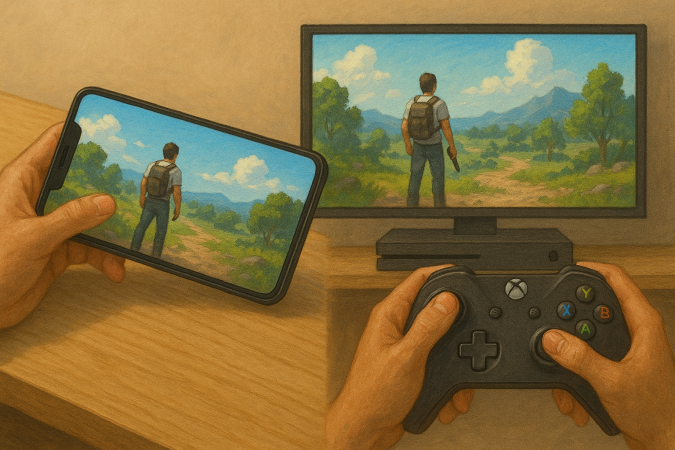Cross-platform play has gone from being a wish-list item to a near-essential feature in modern gaming. Today, whether you’re tapping away on your phone during a commute or leaning back on the couch with a controller, there’s a good chance you can jump into the same world as your friends on different devices. But as much as crossplay has connected players, it’s also exposed the razor-thin tightrope developers must walk when designing for vastly different hardware and control schemes.
The Uneven Playground
The first major hurdle of cross-platform design is the vast disparity between platforms. A console or PC gamer typically plays with a controller or keyboard-and-mouse setup, backed by powerful hardware. Meanwhile, mobile gamers might rely on touch controls and hardware that varies wildly in power. This makes fairness an ever-present concern.
Games like Fortnite and Call of Duty: Mobile have set the bar for what the best cross platform game experience can look like, but even they struggle with balance. Auto-aim assists, UI adjustments, and even matchmaking filters all play a role in making sure no one feels unfairly disadvantaged. Yet despite these tweaks, it’s tough to convince players that a smartphone can go toe-to-toe with a console.

Designing for Two Worlds
For developers, designing a game that works on both console and mobile means thinking beyond just visuals. Interface, controls, and even gameplay pacing must adapt. A console player may have the time and comfort for long, immersive sessions, while mobile gamers often expect quick, digestible matches that can be played in short bursts.
This forces studios into difficult design choices: Should the game’s UI be optimized for tiny screens or widescreen TVs? Should mechanics be simplified for mobile players, even if it risks alienating console veterans? These compromises don’t always please everyone, but when done right, they create games that feel native on every platform.
The Power of Progression
Another key element in balancing mobile and console play is progression. If your hard-earned gear or achievements don’t carry over, cross-platform loses much of its appeal. Games that nail cross-progression—letting you log into your account on any platform and continue exactly where you left off—tend to thrive.
It’s not just about fairness; it’s about respect for the player’s time. Whether grinding on a lunch break or diving into a marathon session at home, players want to feel like every action contributes to their overall journey. Without this, the magic of cross-platform collapses under the weight of frustration.
Technical and Social Challenges
Of course, the hurdles aren’t purely mechanical. There’s also the matter of community. Input-based matchmaking is increasingly used to level the field, pairing controller users with other controller users and touchscreen players with peers. But even with these safeguards, perceptions of fairness can divide communities.
On the technical side, syncing updates across all platforms is no small feat. A patch delayed by even a day on mobile can create chaos when console players are running a newer version. Keeping everything in lockstep requires a massive logistical effort—and when it fails, forums light up with complaints.
Where It’s All Headed
Cross-platform play is still evolving, and developers are learning with every new release. The future may lean heavily on cloud gaming, where the device matters less and everything depends on your connection. Until then, though, the balancing act between mobile and console will remain one of the industry’s toughest challenges.
What’s undeniable is that players crave these experiences, and studios that crack the code will be rewarded with thriving communities. For those chasing the thrill of the best cross platform game, the future looks bright—if not a little complicated.

